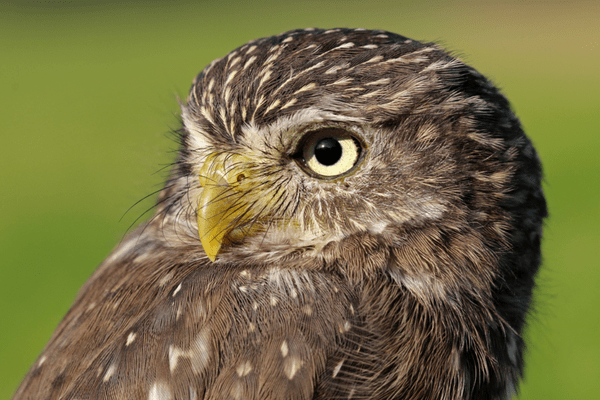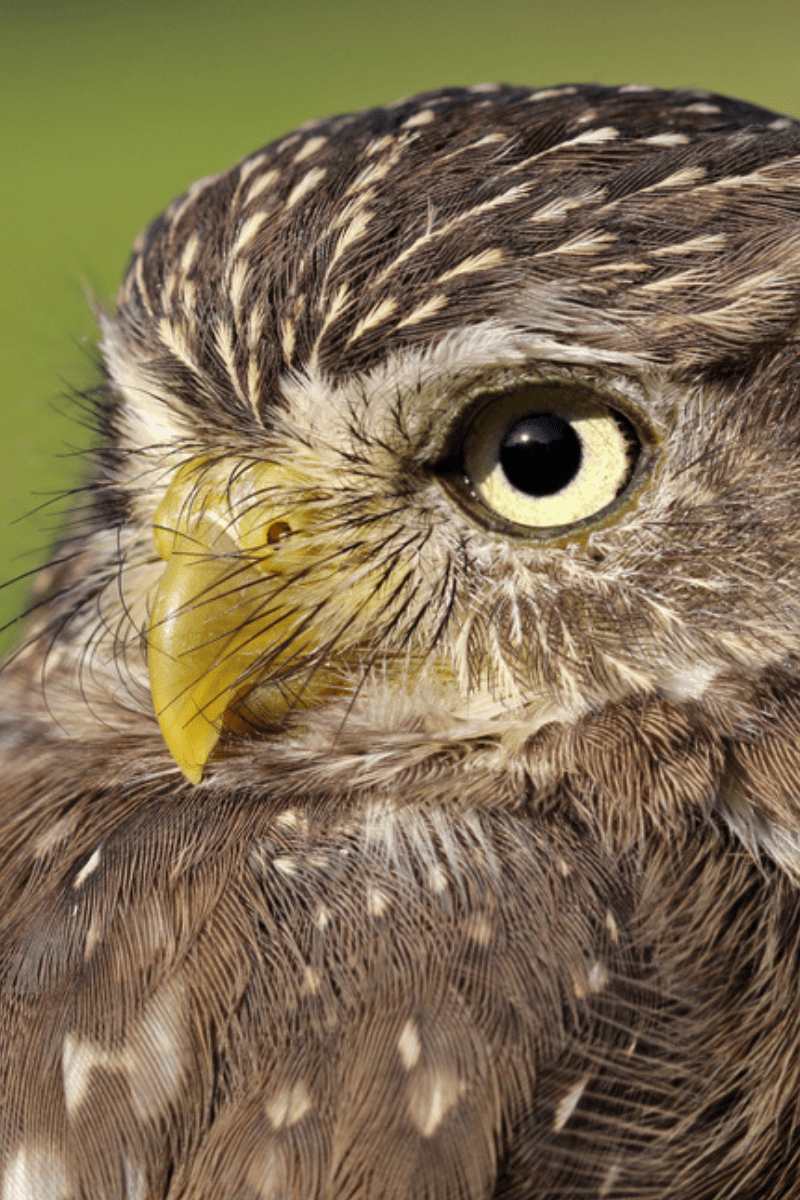Contents
- Ferruginous pygmy owl facts
- Ferruginous pygmy owl: how-to identify
- Where You’ll See A Ferruginous pygmy owl
- Ferruginous pygmy owl diet
- Ferruginous pygmy owl nesting
- Ferruginous pygmy owl behavior
- Ferruginous pygmy owl threats
- Ferruginous pygmy owl fun & interesting facts
- Ferruginous pygmy owl related species in this family
The Ferruginous Pygmy Owl is an owl very prevalent in the United States, all of North America, and parts of Central America. It can be found along Mexico’s southern Arizona and West Coast. It’s also easy to find them in the southern Texas area and in South Mexico going all the way to Panama.
Other names for the Ferruginous Pygmy Owl include the Cactus Pygmy Owl, the Streaked Pygmy Owl, the Gnome Owl, and the Ferruginous Owl.
Besides the significant facts about these majestic creatures shared above, there are other interesting and fun facts that we’d like to teach you today. In fact, I have a plethora of different topics that I’d like to share. They include:
- Ferruginous Pygmy Owl identifying characteristics
- Interesting and fun facts about Ferruginous Pygmy Owls
- Characteristic differences between female and male ferruginous pygmy owls
- Nesting behaviors, migratory habits, dietary preferences, and feeding habits
- Additional facts about ferruginous pygmy owls
To discover more about these beautiful diminutive creatures, please continue reading below.
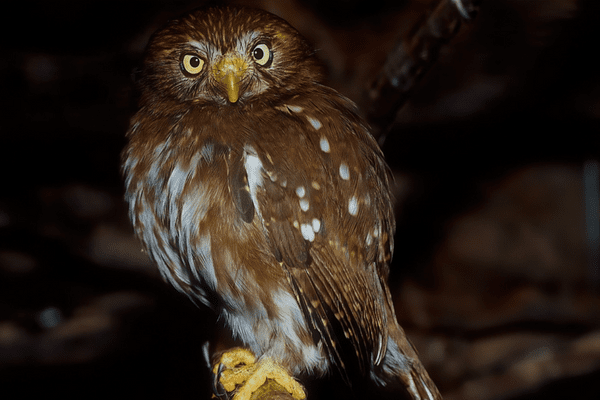
Ferruginous pygmy owl facts
- Common Name: Ferruginous Pygmy Owl
- Scientific Name: Glaucidium brasilianum
- Scientific Family: Strigidae
- Life Span: 6-7 years
- Size: 5.9 to 6.0 inches
- Wingspan: 14.5 to 16.0 inches
- Weight: 2.2 to 2.7 oz
- Conservation status: Least Concern
Ferruginous pygmy owl: how-to identify
First off, the ferruginous pygmy owl is very small. One distinguishing characteristic is that it doesn’t have any ear tufts. The lores and eyebrows of this beautiful creature are white, and although this bird has other white markings, these white markings are very distinguishable.
Its chest has white feathers covered with rufous-brown streaks. And its eyes are black with white yellow irises. It has a yellow bill that can also be greenish, grayish, and grayish-yellowish depending on the particular bird.
Differences Between Male & Female
There aren’t any major differences between male and female plumage of the ferruginous owl. The only major difference is in size, and it has nothing to do with plumage itself. The female owl is bigger than her male counterpart.
Differences In Summer Plumage vs Winter Plumage
There aren’t any differences in the local feel of plumage during summer, winter, spring, or fall months for the ferruginous pygmy owl.
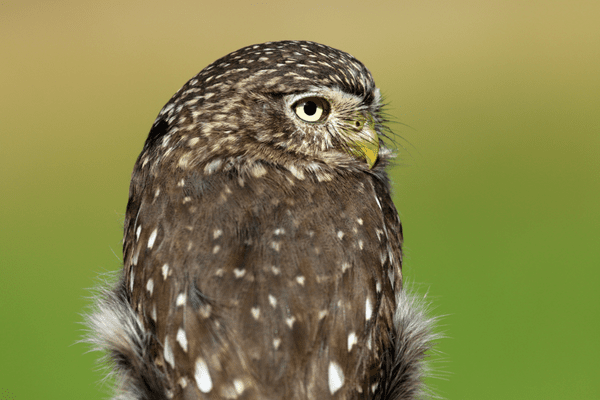
Where You’ll See A Ferruginous pygmy owl
The ferruginous pygmy owl likes to spend its time in habitats that include saguaros, desert riverine words, and Mesquite thickets. In southern Texas, you’ll find it in plentiful supply and low stands of live Mesquite and oak.
Ferruginous pygmy owl bird migration
This nocturnal bird lives and breeds in southern Texas and South-Central Arizona throughout the US. It’s also around in plentiful proportions on the map in Mexico in the self and parts of Central America including Argentina, Bolivia, and Paraguay.
Ferruginous pygmy owl diet
The ferruginous pygmy owl is a carnivore that feeds on a wide variety of creatures including mammals, reptiles, birds, and insects. In particular, when feeding on insects, it usually sticks to smaller insects including caterpillars, crickets, and grasshoppers. But it is known to eat large insects and scorpions as well.
But that’s not all, because it will eat reptiles too. In fact, it is known to hunt and eat small lizards and it will even eat these creatures whole. Examples of small lizards that will eat whole include the Great Plains skink and the four-lined skink.
As far as mammals are concerned, the species that it hunts the most our various rodents including mice, rats, deer mice, and more. It’s also known for eating shrews as a fairly large part of its diet as well.
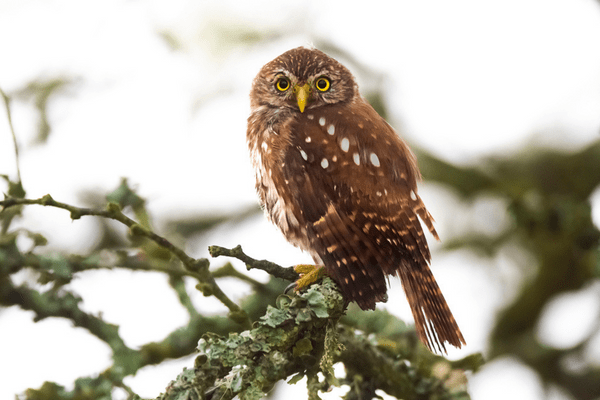
Ferruginous pygmy owl nesting
- Clutch Size: 2-7 eggs
- # of Broods: 1 brood
- Incubation Period: 24-27 days
- Nestling period: 26-35 days
- Egg Description: White
The great thing about ferruginous pygmy owls is that these creatures are monogamous and they find a partner and form a lasting lifelong bond with them. Their breeding season takes place during late winter and goes into early spring. During the nesting period, the pair will nest within tree holes or a cavity within the cactus often left behind by woodpeckers.
After the meeting, the female will have anywhere from 2-7 eggs and she will incubate these eggs for 24-27 days. During the incubation period, the male will bring the female food and continue to do so until the first few weeks of hatching have passed. The owlets fledge after reaching roughly 30 days old. At this point, they become independent creatures and move away from their parents roughly 3 weeks afterward.
Ferruginous pygmy owl behavior
The ferruginous pygmy owl is considered a crepuscular creature, but it still hunts by day quite often. From its perch, the small owl will recognize its prey and fly very quickly and rapidly toward the animal that it is hunting. During this quick flight, he will grab its prey using its talons and it will capture the creature to bring it back to its nest to feed its loved ones.
At night, ferruginous pygmy owls are known to become vocal. They are also very vocal during the period of sunrise and sunset. Mainly, it gives a whistling call that sounds like hoo-hoo-hoo-hoo.
They enjoy spending their time by themselves, but they also tend to remain in pairs during mating season. They have an interesting way of moving in trees. Instead of flying from branch to branch, they like to walk and hop from one branch to another. But they also move using short flights that take them directly to the location of their choosing.
While flying, they look very similar to many woodpeckers. Their flight consists of undulating in motion. When things appear dangerous or exciting, the ferruginous pygmy owl Wilcock hits its tail and moves it back and forth from side to side.
Ferruginous pygmy owl threats
The conservation status of the ferruginous pygmy owl is considered Least Concern. This means that at the moment the owl species isn’t considered endangered. Although, it’s important to note that the population of this owl is quickly dwindling.
And in some areas of the United States, they are threatened or endangered, which means they are well on their way to becoming an endangered species if conservationists can’t save them from their biggest threat, which is habitat loss. One of the biggest reasons why they are losing their habitat is due to grass fires, which catch very easily and spread throughout their main habitat.
Ferruginous pygmy owl fun & interesting facts
- This species is also a member of a much larger family. They are also a member of the typical owl family. It contains the wide majority of owl species.
- The ferruginous pygmy owl contains a patch of darkened feathers on the back of its head. These feathers actually look like eyes. Many people call them false eyes because they can fool prey while they are hunting.
- The ferruginous pygmy owl, just like all owls, actually has three different islands. They have an eyelid for blinking, an eyelid for sleeping, and a third eyelid that makes it easy to keep their eyes clean.
- Ferruginous pygmy owls are often mobbed by smaller birds. Even though this species is very small, the other birds never have difficulty locating them. As many as 40 birds that makeup 11 different species will mob the ferruginous owl.
- The ferruginous owl is small and stocky, and its feet and talons are disproportionately large. It has an elongated crown, white and buff streaks, and its wings are covered in white spots. The undercarriage of the ferruginous owl is also street heavy with white streaks.
- A study that took place on the King Ranch in Texas discovered that the ferruginous pygmy owl will prey on other birds including the eastern Meadowlark, blue grosbeak, Northern cardinal, and other varying songbirds.
- A subspecies of the ferruginous pygmy owl known as the cactus ferruginous pygmy owl has substantially declined in population throughout Arizona. It was even considered an endangered species between 1997-2006. But it is no longer on the endangered species list.
- The population of the ferruginous pygmy owl in Sonora, Mexico dropped dramatically by 36% between 2000-2009. So, the population is definitely declining, although it isn’t considered an endangered species at this time.
- It’s easiest to see ferruginous pygmy owls in the United States in South Texas. They are known for spending time on bird-friendly ranches in the area. Many of the Rio Grande floods in July 2010 forced this species out of its traditional haunts near the border of Mexico.
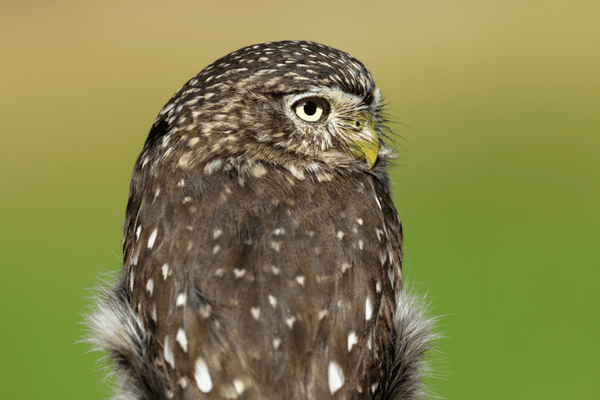
- Northern Saw-Whet Owl
- Snowy Owl
- Great Grey Owl
- Long-Eared Owl
- Northern Hawk Owl
- Short-Eared Owl
- Northern Pygmy-Owl
- Elf Owl
- Barred Owl
- Western Screech-Owl
- Burrowing Owl
- Boreal Owl
- Spotted Owl
- Eastern Screech-Owl

